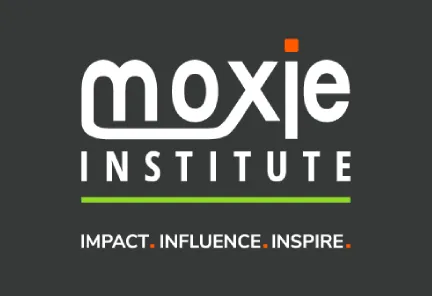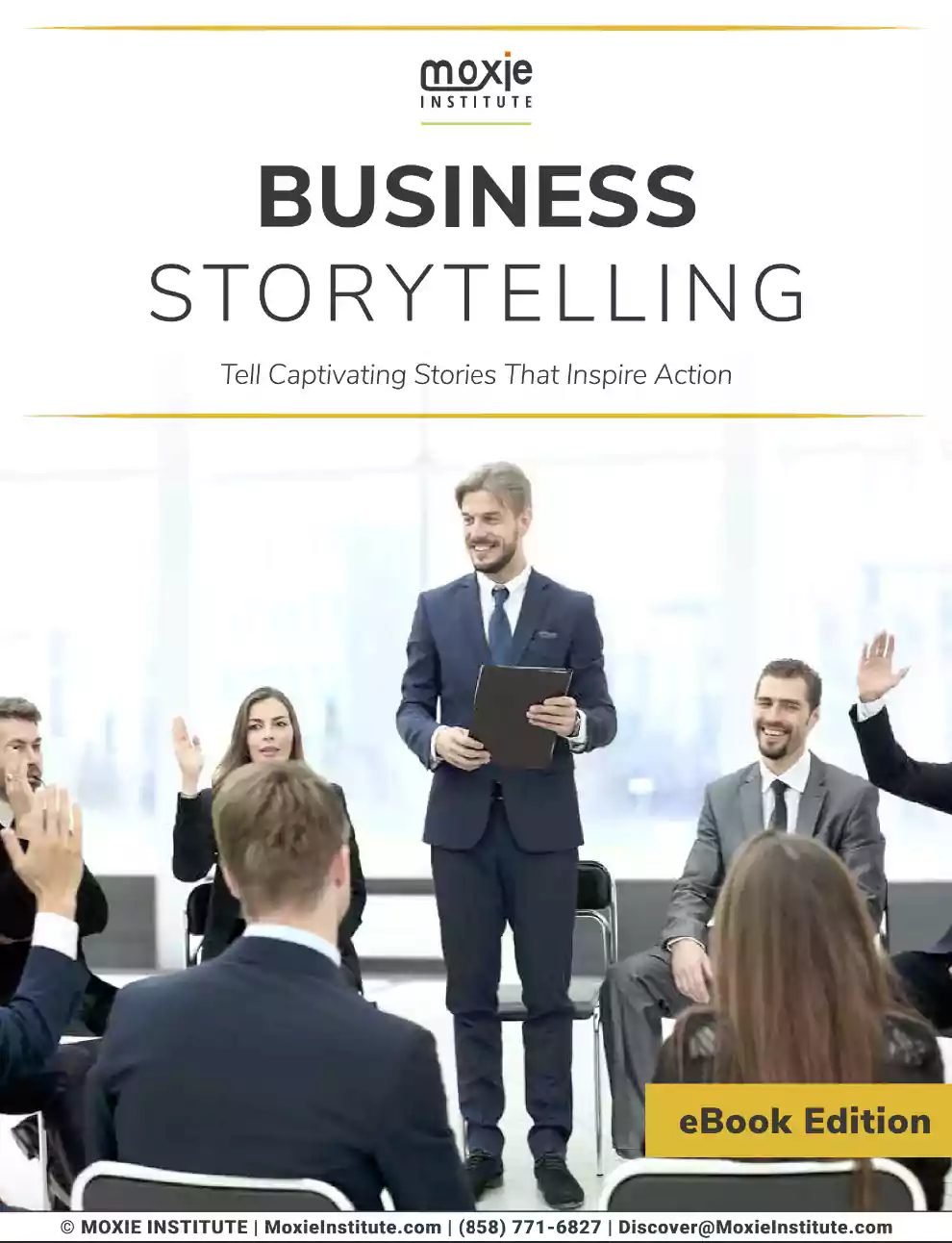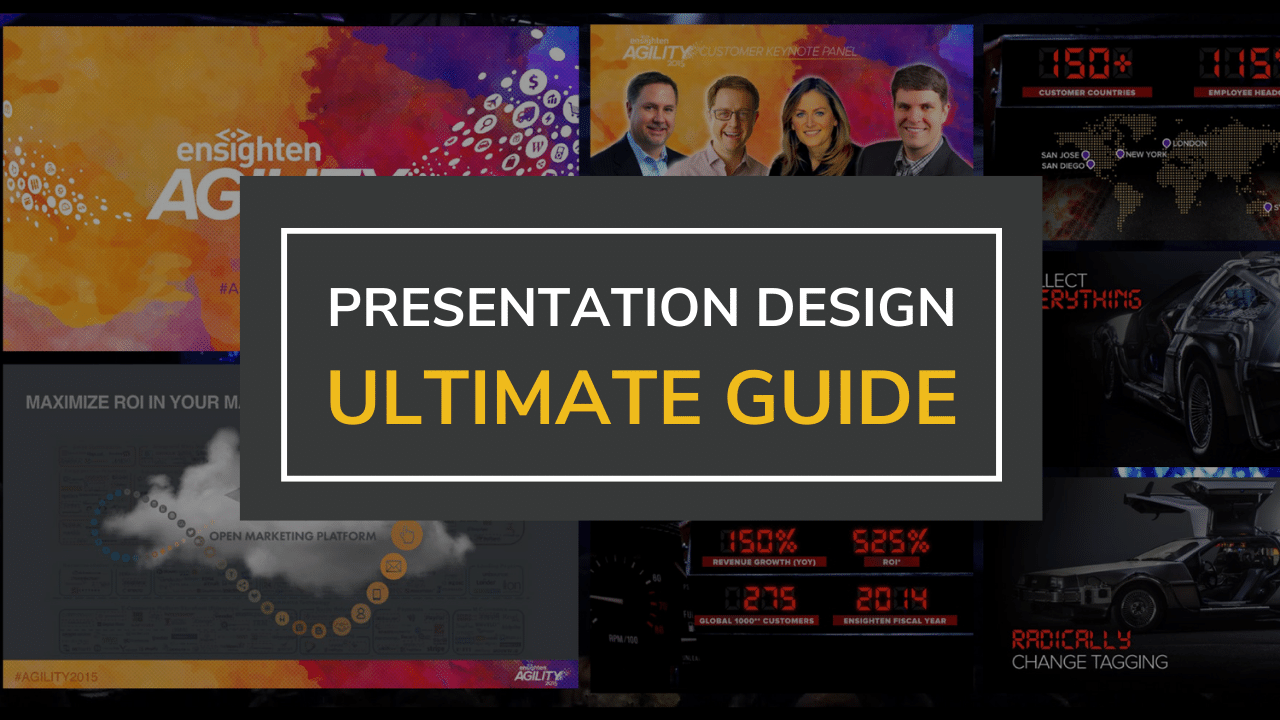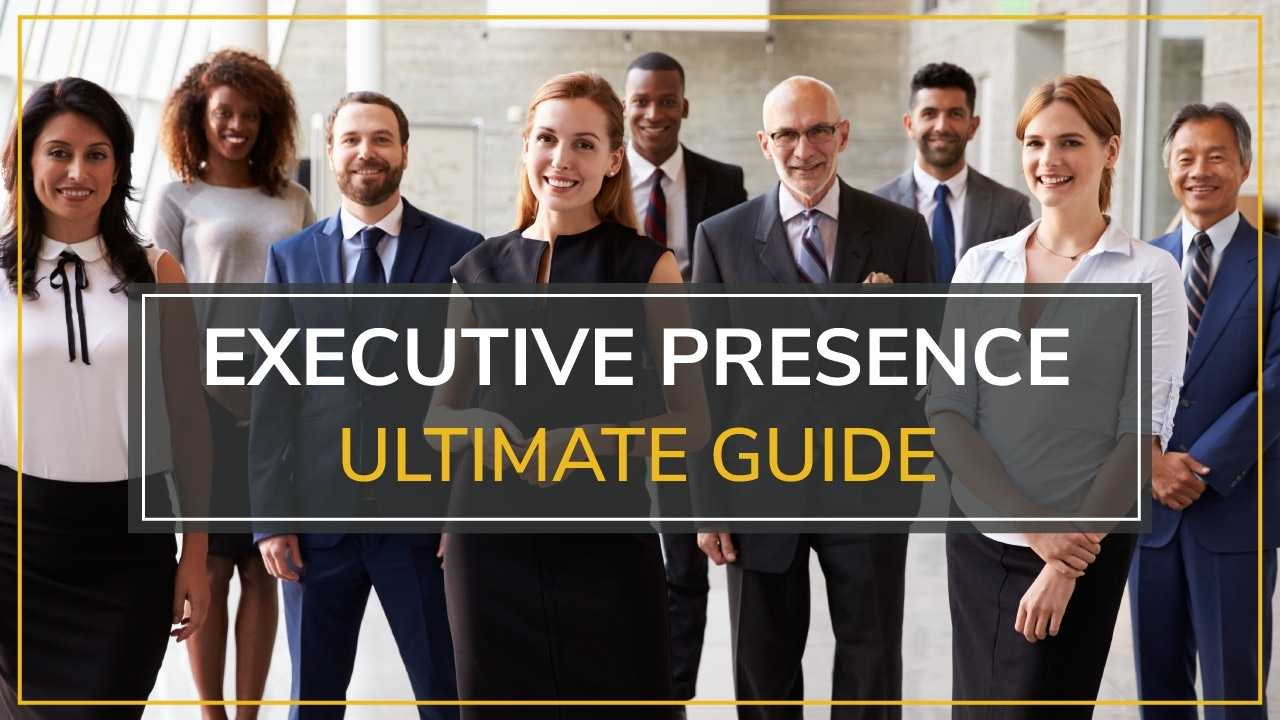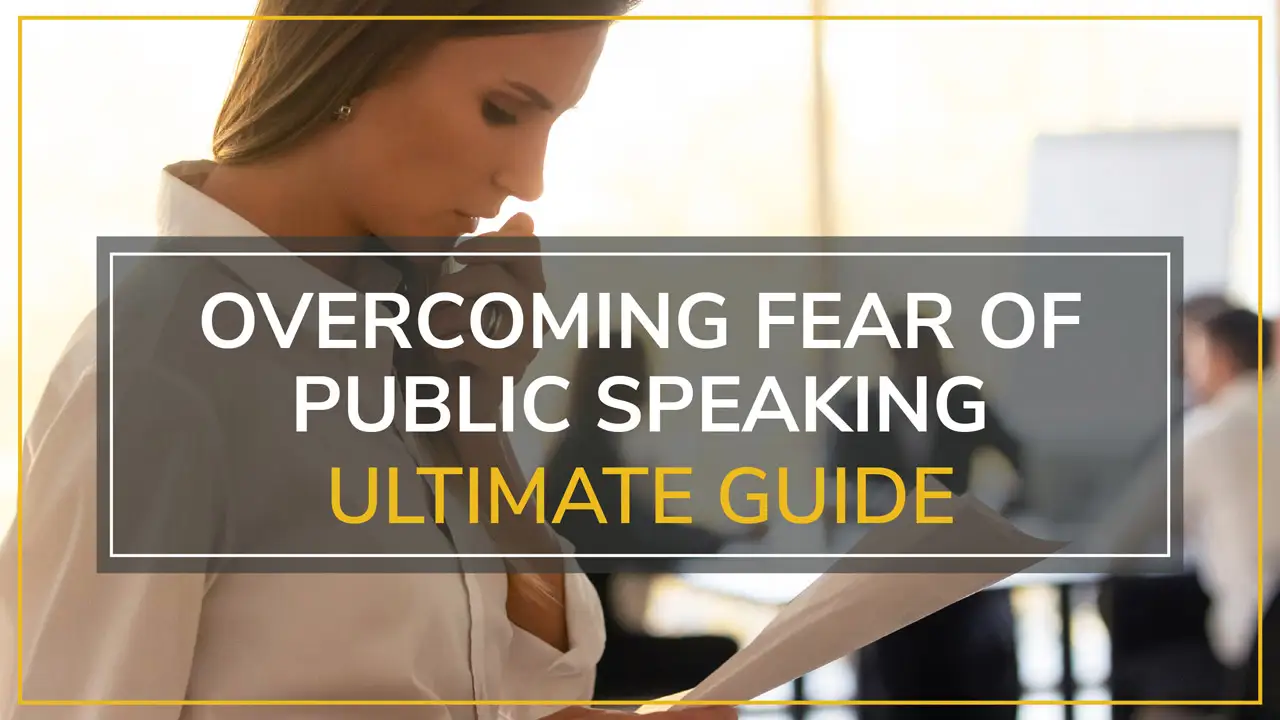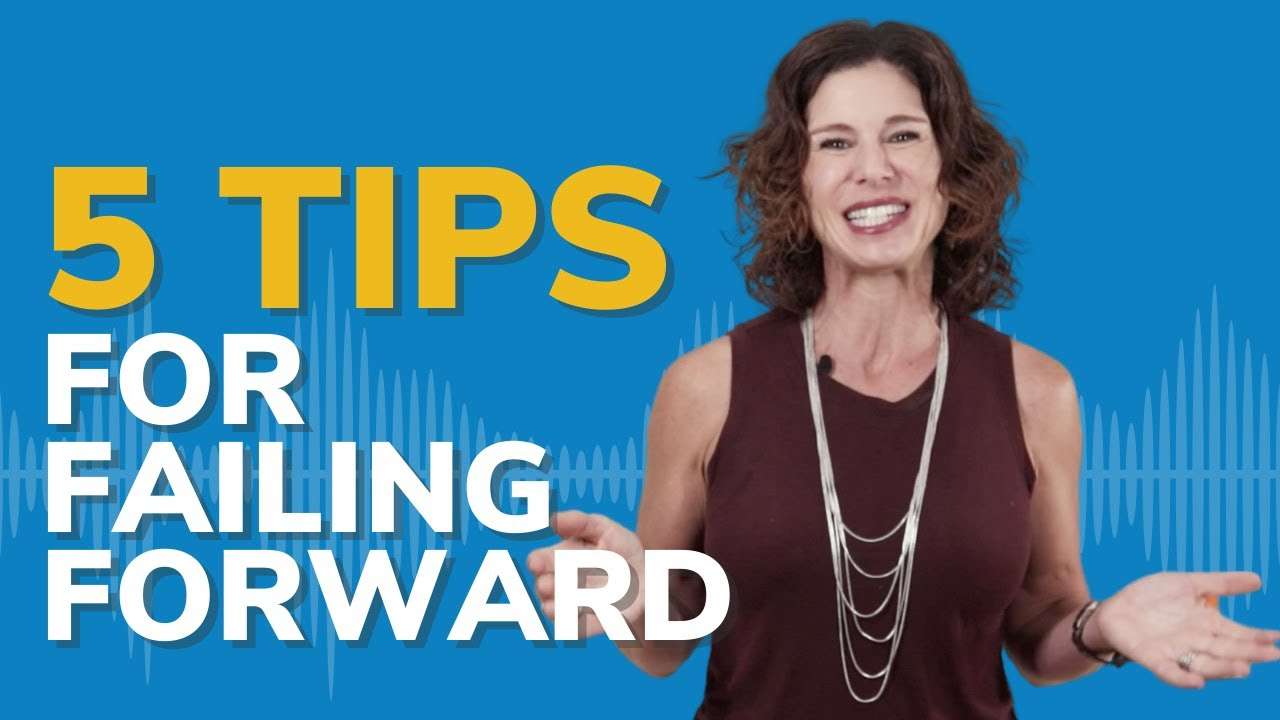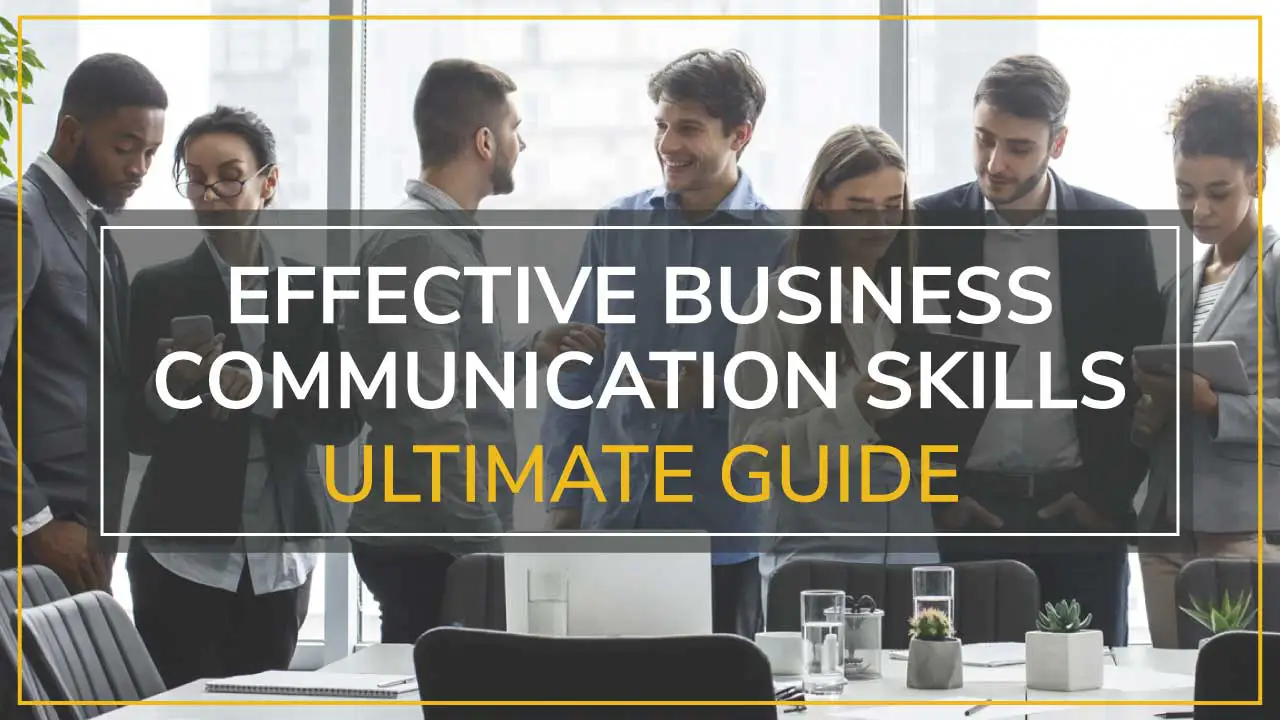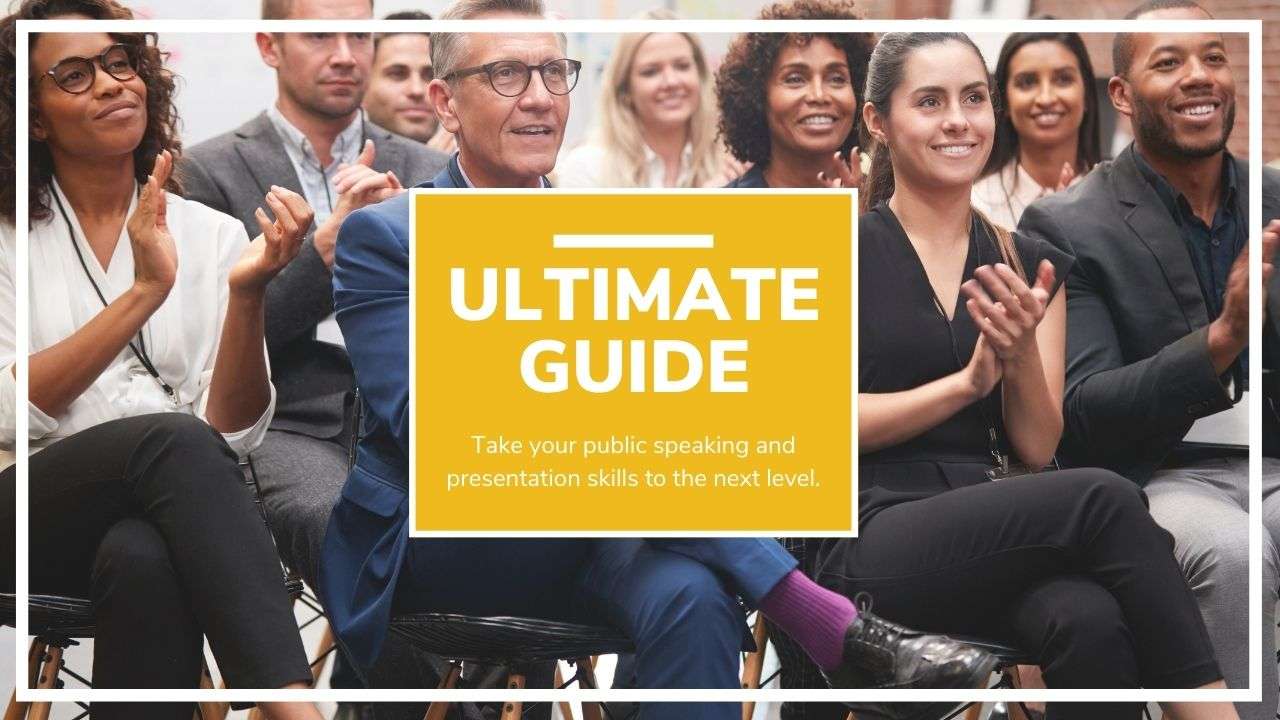Introduction: The Critical Nature of Speech Conclusions
Did you ever go to a presentation that began with great energy and then fizzled out at the end with an uncomfortable “…that’s all I have” or a weak “thanks for listening”? Such letdown can leave the audience feeling frustrated and take away from the quality of otherwise great work. The unfortunate reality is that many speakers exert a great deal of effort developing their introductions and then simply tack on a conclusion.
At Moxie Institute, we’ve had the privilege of watching thousands of talks within Fortune 500 companies, and we have seen firsthand that how to end a speech powerfully (or not) can make or break a speaker’s chances of making a lasting impact. There’s evidence from cognitive psychology that audiences remember beginnings and ends more than the middles of presentations—the closing of a presentation is the most recent impression of the content, leaving it ringing in the audience’s ears well after it’s over.
In our years coaching CEOs, executives, and professionals in industries of all kinds, we have developed and perfected techniques to create speech endings that resonate, inspire, and move to action. This exhaustive guide shares the research-based practices we employ to help speakers develop unforgettable conclusions that resonate with their audiences and send them away energized. Whatever your “big presentation” is—a keynote, a high-stakes sales pitch, a company town hall, or a wedding toast—perfecting these strategies will help you turn your endings from head-shakers to show-stoppers.
The Psychology Behind Memorable Speech Endings
Why the Ending Matters More Than You Think
“The last words of your speech are the ones your audience will remember. This is your last opportunity to take that step to persuade, to clarify, to cement in the mind of the receiver what your story is about, to ensure your audience leaves the thought or action for them to take,” says Dr. Carmen Simon, a cognitive neuroscientist and the author of Impossible to Ignore.
When we train senior executives for high-stakes presentations, we coach them to understand that knowing how to end a speech is as important (some would say more important) as knowing how to start a speech—like knowing the exact point to offer a specific handshake when meeting a prospect.
In our public speaking training courses, we share three psychological factors that explain why speech endings have a disproportionate effect:
- The Recency Effect: In cognitive psychology, people do better at recalling information that appeared at the end of a sequence than that which appeared in the middle. It’s a psychological phenomenon, the recency effect, and it means your ending has disproportionate importance in the memory of your audience.
- Emotional Peak-End Rule: The winner of the Nobel Prize in economics, psychologist Daniel Kahneman has demonstrated that we judge experiences almost entirely on how they were at their peak and their end, rather than the total sum or average of every moment of the experience.
- Closure Principle: We are a species that thirsts for answers. A good conclusion satisfies this need for closure, thereby lending to a feeling of satisfaction and closure.
The Science of Memory and Final Impressions
According to Harvard Business Review, presentations that have a strong, intentional close are 30% more likely to elicit immediate action and they’re 25% more likely to be remembered correctly weeks later. This squares with what we’ve empirically observed when coaching thousands of corporate executives in how to conclude a speech well.
There is some very fascinating neuroscience in play here. When processing information comes to an end, perhaps at a final, emotive conclusion to a story, which has an emotional punch, the brain’s two structures — the hippocampus (vital for creating memories) and the amygdala (the seat of all emotion) — are activated together. Such dual activation lead to stronger, more robust memories traces than emotional-neutral content.
Brain-Based Insight: We frequently share a mind-blowing stat from the research on communication in our corporate training sessions—and that’s that audiences only remember about half of what was said within 24 hours after hearing it; that is, unless a well-constructed conclusion was delivered which, in that case, the retention of the most critical content was increased by nearly 40%.
10 Powerful Ways to End a Speech
Now that we understand the psychological strategies for crafting a strong speech conclusion, here are ten effective techniques for concluding any speech. Each strategy meets different objectives and the nature of speech; take into account your purpose and your audience to choose the closing plan.
1. The Full-Circle Closing
One of the most elegant ways to end a speech is by connecting your conclusion back to your introduction, creating a sense of completion and symmetry. This technique provides satisfying closure while reinforcing your central message.
How it works: Refer back to a story, question or statement from your opening now that the content of your presentation has made it new.
Example: Opening: “Close your eyes and picture yourself standing at the foot of Mount Everest staring at the impossible challenge before you…” Closing: “And so as we now find ourselves at our own Mount Everest of market disruption, remember that — just like the best climbers — it wasn’t just about summiting; it was about having the right team, the right preparation and the resilience to make the journey.”
When to use it: This approach is especially effective for motivational speeches, keynotes, and presentations with a narrative structure.
2. The Call to Action
When you need your listeners to take a certain action after you’ve finished speaking, there’s nothing that will drive your point home more succinctly than a strong CTA (Call To Action) as the way to end your speech.
How it works: Simply and explicitly tell your audience exactly what it is you want them to do, why it’s important and what needs to happen next.
Example: “I’m asking each of you to engage in one conversation per week with a team member from another department. And if we start there, with that small action, we can start breaking down the silos that are costing us millions of dollars in redundant work. (The invitations with suggested pairings have already gone out — all you need do is show up and be curious.)”
When to use it: Use this clincher for persuasive speeches, sales campaigns, fundraising appeals and any talk in which your primary goal is to get the audience to take action.
Pro Tip: In our work coaching Fortune 500 executives, we’ve learned that calls to action are 70% more effective when they include both when and how the action should take place, not just what the action is. The more concrete and immediate the action, the more likely people are to comply.
3. The Compelling Story Conclusion
Stories establish emotional contexts, depict abstract ideas, and implant your message in memory. Finishing with a carefully chosen story can be memorable.
How it works: Tell a short, emotionally self-contained story that illustrates your main point, and then connect it directly to your main point.
Example: “When JFK went to NASA in 1962, he saw a janitor carrying a broom. Kennedy asked what he was doing, and the man replied, “Mr. President, I’m helping put a man on the moon.” That janitor knew something deep about purpose — that every job, no matter how menial it seemed, was essential to the greater mission. As you go back to your teams tomorrow, ask yourself: Are you checking things off a list or are you helping put someone on the moon?”
When to use it: Use this for motivational speeches, change management presentations, and culture-themed communication.
4. The Provocative Question
Finishing with a challenging question keeps the audience thinking and extends your influence out of the room.
How it works: Ask the reader a well-considered question that gets them reflecting on an aspect related to your message.
Example: “As we roll out these new sustainable practices, I’ll leave you with a question: What sort of company do we want to be fifty years from now—one that followed the path of least resistance or one that had the courage to chart a different course even when it was hard?”
When to use it: Try it when you are doing thought leadership presentations, values-based talks, or you want to create a chat at the end of your presentation.
5. The Powerful Quote
A well-placed quote can help you make a memorable point and borrow some of the gravitas and eloquence of an honored figure.
How it works: Choose a short, relevant quote that helps prove your argument, and offer short comments that help connect the quote to the main point.
Example: “Maya Angelou once said, ‘I’ve learned that people will forget what you said, people will forget what you did, but people will never forget how you made them feel.’ As we evolve our customer experience strategy, it’s not just about numbers and touchpoints — it’s about creating moments that make our customers feel valued, understood, and excited.”
When to use it: This comes in handy for motivational speeches, educational talks, or when a little gravitas is needed in your close.
Quote Selection Insight: When we’re coaching TED speakers, we advise on what sorts of quotes: (1) Are for your context, (2) Come from respectable sources that your audience respects, (3) Aren’t overused, and (4) Are short— ideally below 15 words for maximum impact.
6. The Vision of the Future
Create a stronger contrasting vision of success if your proposals were to be adopted, so your listeners can understand what you’re solving for.
How it works: Present a vivid, specific scenario that illustrates why following your policy recommendations would increase human welfare.
Example: “Close your eyes and think about what our office will look like three years from now. Cross-functional teams work collaboratively in a fluid environment. Product development timescales are now measured in weeks, not months. We recently achieved a 40% customer satisfaction boost, and our staff turnover rate is the lowest in the business. This is not a fantasy — it’s the potential future we can achieve if we take collective action now.”
When to use it: Great for change management presentations, strategic proposals, and inspirational leadership talks.
7. The Summary Close
Sometimes the best thing to do is probably to summarize one more time and keep hammering home your main points, because repetition helps you maintain clarity and avoid forgetting.
How it works: Recap your key points (ideally three to five) in a few sentences, using fresh language to underscore why they’re so important.
Example: “To recap, the three steps that are critically important in our cybersecurity upgrade: First, we are going to harden our infrastructure through the more sophisticated encryption protocols we talked about. Second, we’re equipping our people with the new holistic training program that starts next month. Lastly, we will strengthen our monitoring systems with AI-based threat detection. Combined, these efforts constitute our defense in depth strategy that will safeguard the most sensitive customer data.”
When to use it: Opt for this strategy when dealing with presentations full of information, training presentations, straightforward proposals or difficult-to-understand topics in which comprehension and retention are what you’re aiming for.
8. The Inspirational Challenge
Move your audience by setting them up for a higher level, different thought or action.
How it works: Offer a challenge that relates to your message and the aspirations, capacities or values of the audience.
Example: “The opportunity before us is not just to build better products—but to imagine entire new ways of doing things in our industry. It’s asking questions that nobody else is asking. It’s about daring to fail smart as you venture forward. I’d like to issue each of you a challenge to bring one totally audacious … radically different idea to the innovation summit in a month, not just safe tinkering, not just, ‘Oh, I’ve got this great idea for something,’ but something that disrupts our understanding of the possible.”
When to use it: Use this in your motivational speeches, team rallies and in presentations about innovation, change, and high-performance.
9. The Callback Technique
Like the full-circle, but more flexible, the callback is to something at the beginning of your presentation, a story, example, concept, etc.
How it works: Recycle a pivotal moment, metaphor, or example from your pitch, employing it to drive home your message with extra oomph.
Example: “Remember the story I told you about the two wolves who live inside of us — one is fear and doubt, and the other is courage and hope? In the face of these market challenges, the question remains: Which wolf will we feed in the next few months?”
When to use it: This is suitable for much longer presentations when you need to hammer out a key concept that rounds everything out.
10. The Dramatic Statement
One big idea can make the ending resonate in the head and the heart.
How it works: Write a sharp, impactful sentence that addresses your message in a unique way.
Example: “Our competitors are running fast, but they’re running in the other direction by looking through a rearview mirror. We are looking at the horizon — and that changes everything.”
When to use it: This works as a closing for keynotes, inspirational talks or whenever you want to leave a strong, quote-worthy final impression.
Expert Advice from Our Speechwriters: The best dramatic statements possess 3 key qualities: brevity (usually less than 15 words), balanced structure (often parallel construction), and surprising point-of-view, forcing the listener to see in a different way.
Common Pitfalls When Ending a Speech
Having worked with thousands of speakers, we’ve found that the following techniques, which I call the “Seven Deadly Sins of Speaking,” cover the most common mistakes that people make in concluding their speeches. By avoiding these pitfalls you will have much more confidence in your results.
- The Fade-Out Ending: Diminishing gradually with lines such as “So… that’s it” or “I guess that’s all.” This dilutes your power and squanders your most precious speaking real estate.
- The Fake Conclusion: When the conclusion is signaled (“And finally…”)”) but subsequently adding new things. This leads to confusion and lessens impact with the audience.
- The Apologetic Close: Finishing with something like, “I’m sorry I ran long” or “I didn’t get to everything.” This is a negative, not a statement of what you are going to do, but what you’re not going to do.
- The Redundant Thank You: Of course, it’s good manners to thank people… “Thanks for the attention” is so cliché and I know you can do better.
- The Cutoff: Just walking off without any kind of closing gestures. This leaves your audience wondering if you’re done.
- The New Information Dump: Adding big new ideas in your conclusion instead of recapitulating the most important ones.
- The Amorphous Call to Action: Advising action without concrete guidance (e.g., “Consider these issues”).
How to Avoid These Mistakes
In order to sidestep these pitfalls when determining how to conclude a speech, here are clear strategies for ending on a strong note:
- Script Your Closing Word-for-Word: While some aspects of your speech may better off being flexible, the conclusion is not one of them. That way you know that you’ll be able to hit hard at this make-or-break moment.
- Signal Your Conclusion: Offer explicit linguistic markers: “In conclusion,” “Let me leave you with,” or “Finally,” for example, to signal that you are approaching the end of your talk.
- Force Yourself To Deliver: Rehearse your conclusion many more times than the rest of the speech, being sure to vary pace, tone of voice, and have confident body language.
- Establish a Finish: Write a last sentence with an endorphin punch, at once conclusive and loopy, so there can be no question about whether or not you are finished.
- Decouple Value from Thanks: If you want to express your thanks to your audience, do it after you end in a storm of impact, not in lieu of it.
Execution Excellence Insight: We advise our executive speech clients to tape themselves delivering their close and then to watch the tape. Watch for clear signs you’re wrapping up, strong vocal stress on key ideas, and resolute, deliberate pacing that does not race through or lose steam.
How to Choose the Right Closing for Your Speech
Not every conclusion is effective for all types of speeches or audiences. Below is our recommended framework for choosing the best way to conclude a speech for your particular audience.
Matching Your Closing to Your Speech Purpose
Various uses of speech demand various techniques of conclusion:
For Informative Presentations:
- Summary Close: Reiterates the most important points
- Full-Circle Technique: Provides a nice sense of closure
- Provocative Question: Keeps you pondering the data
For Persuasive Speeches:
- Call-to-Action (CTA): Points audience to exactly what they are to do next
- Vision of the Future: Constructs how the audience can see the future in what you are proposing
- Challenge: Inspires the audience to adopt your point of view
For Inspirational Talks:
- Compelling Story: Punches you in the feels
- Powerful Quote: Adds a dynamic touch to your message
- Dramatic Statement: Leaves an unforgettable impression
For Decision-Making Contexts:
- Summary with Benefits: Summarizes the main points, and emphasizes benefits
- CTA with a Timeline: Creates urgency and clear next steps
- Addressing Objections: Preemptively resolves remaining concerns
Considering Your Audience
Adapt your ending to your particular audience’s requirements, tastes, and cultural expectations:
Executive Audiences typically respond best to:
- Concise, business-focused conclusions
- Obvious ROI and strategic consequences
- Business-related forward-looking statements
Technical Audiences often prefer:
- Intelligible summaries of the most important conclusions
- Specific technical implications
- Next steps in implementation or research
General Audiences usually connect with:
- Story-based conclusions
- Emotional appeals based on mutual values
- Personal significance and interest
Cultural Considerations: Different cultures have different preferences on the speech ending. For example, Western audiences generally require very direct, action-oriented appeals, but some Eastern nations might be more receptive to implied, principle-based calls to action.
Audience Analysis Insight: Before finalizing how to end a speech, ask yourself: “What is the one emotion you want your audience to feel when they walk out of the room?” Then design your conclusion to bring that specific emotion to the surface — whether it’s inspiration, urgency, curiosity, or determination.
Crafting and Practicing Your Speech Ending

Writing Techniques for Powerful Closings
Use these professional speechwriting tips to write powerful conclusions that resonate:
- Use Parallel Structure: Establish rhythm and emphasis through similar grammatical structures. Example: “It’s not about the technology that we build. It’s not the markets we find ourselves in. It’s about the lives we touch.”
- Use the Rule of Three: Cluster ideas in threes to create impact and reinforce recall. Example: “This method will help us save time and costs, and will be beneficial for everyone involved.”
- Use Contrast: Focus on what’s missing to get your point across. Example: “We can continue with comfortable mediocrity, or we can strive for uncomfortable excellence.”
- Use Sensory Language: Pull in your reader’s imagination by using specific sensory details. Example: “Hearing the audience clapping fills the halls as you boldly present your message with clarity and confidence.”
- Use Pauses Strategically: Schedule deliberate ’empty’ places for the audience to absorb and react. Example: “The decision we make today will shape our company for decades to come. [PAUSE] Let’s make it count.”
Speech Structure Exercise: Write three conclusions for your speech, using slightly different approaches. Then, read each one out loud, and determine which one best reflects how you want to come across with the content and style that you’re using.
Rehearsal Strategies for a Flawless Delivery
Even the most eloquently turned conclusion will lose its lustre if it is not given the final polish. Apply these rehearsal exercises to help ensure your closing packs the biggest punch:
- The 3x Practice Rule: Practice your close 3 times as much as the rest of your speech. This builds muscle memory and you are comfortable saying: this is the moment that matters!
- Video Analysis: Film yourself delivering only your conclusion. Watch for:
- Eye contact (strong, direct)
- Vocal variety (appropriate emphasis)
- Intentional movements to emphasize your points
- Elimination of filler words
- Strong, confident posture
- The Backward Building Technique: Practice your conclusion first, then the section before it, then the section before that. This builds confidence as you approach your conclusion during the actual presentation.
- Feedback Focus Groups: Test several conclusion options with close friends who will let you know which close was the most impactful and why.
- The “Power Pose” Method: Stand like a confident person (shoulders back, arms out a little) for two minutes before you practice your conclusion. Research from social psychologist Amy Cuddy suggests this can increase confidence-related hormones.
Voice Modulation Tip: When practicing how to end a speech, try lowering your voice by even a tiny bit, and slowing your pace as you finish the final sentences. This subtle shift signals conclusion and adds gravitas to your final words.
Your Speech Ending Action Plan

Follow this step-by-step implementation plan to craft and deliver a powerful conclusion for your next presentation:
- Analyze Your Speech Purpose and Audience (Day 1)
- Identify your primary speech goal (inform, persuade, inspire)
- Define your ideal audience response
- Select 2-3 potential closing techniques that align with your purpose
- Draft Multiple Conclusion Options (Day 2)
- Write at least three different conclusions using different techniques
- Keep each conclusion under 200 words for maximum impact
- Ensure each option reinforces your central message
- Evaluate and Select (Day 3)
- Read each conclusion aloud
- Ask trusted colleagues for feedback
- Choose the version that best achieves your goals
- Refine and Memorize (Days 4-5)
- Edit for conciseness and impact
- Memorize word-for-word
- Identify key emphasis words and planned pauses
- Intensive Rehearsal (Days 6-7)
- Practice with correct vocal inflection and gestures
- Video record and analyze your delivery
- Practice transitions into your conclusion
- Delivery Preparation (Day of Speech)
- Conduct a final run-through focusing on the transition into your conclusion
- Visualize successful delivery
- Reminder: Slightly slow your pace and maintain strong eye contact during your conclusion
Key Execution Checkpoints:
- Have you trimmed all lossy words away?
- Is your ending delivered in 45-90 seconds (preferred length)?
- Do you have it all memorized?
- Does it give us a good, satisfying sense of closure?
- Does it suit your presentation goal?
Frequently Asked Questions
How long should my speech conclusion be?
The perfect conclusion length is based on how long your total presentation is. In general, your end portion should take up about 5-10% of your speaking time. For a 20-minute talk, have about 1-2 minutes of conclusion. For extremely brief presentations (e.g., less than 10 minutes), your conclusion may be only 30-45 seconds.
That is the challenge here — to ensure the ending feels right in scale, and gives it time to land. Research on audience attention spans reveals that endings less than 30 seconds feel clipped, but any over 2-3 minutes tend to become diluted.
Should I memorize my conclusion word-for-word?
Yes, absolutely. That said, although we usually recommend a less-rigid approach for most of your delivery, your beginning and closing need to be memorized exactly. Cognitive load theory research helps to explain why: when it comes to high-stress moments (such as concluding your presentation), memorizing your conclusion in full will allow your cognitive resources to be freed up for confident delivery of the conclusions, rather than content recall.
In our work as executive coaches we have found that when speakers memorize the exact words they will use to open and close a speech, they are much more likely to deliver stronger eye contact, more natural gestures and greater vocal variety at those critical moments.
How can I smoothly transition into my conclusion?
Establish a clear transitional statement that lets your audience know you are now concluding. Good transition words include:
- “As we conclude today…”
- “Let me just leave you with this thought…”
- “To return to where we started…”
- “So, what we learned today is…”
- “I will just finish with one other point…”
Steer clear of phrases such as “In conclusion…” or “To sum up…” which can sound clichéd. Instead, make a transition that is more directly related to your content.
Slight pause right after your transition phrase for maximum effect. This generates an expectation and a sense that what you’re about to say is significant.
Is it appropriate to end with “Thank you” or “Any questions?”
While thanking them is the nice thing to do, closing with just “Thank you” or “Any questions?” does a disservice to the precious little time you have left. Rather, deliver your punchy close first, and THEN bring in “Thank you” or segue to questions after that.
The difference is one of nuance, but it’s significant: The conclusion should be where your audience last hears substantive content, not a perfunctory acknowledgment or a statement of thanks.
A more effective approach:
Weak: “The Plaintiff thanks the Court for hearing the matter. Any questions?”
Strong: “We have the opportunity to make our customer experience better.” [pause] Thank you. I’d be glad to answer any questions you may have.”
How can I do a question and answer without deflating the conclusion?
If your talk involves a Q&A, you have two alternatives that work well:
Option 1: The Bookend Approach Position your Q&A before your true close. So your planned closer is the last thing your audience hears.
Example transition to Q&A: “I want to pause for questions before I wrap up with my final thoughts.” Sample transition to conclusion: “With those thoughts in mind then, let me finish with this thought…”
Option 2: The Summary Close After Q&A Close the summary with a 30-second reiteration of your key message.
Example: “Thank you for those wonderful questions. As we close out today, let’s not forget that great presentations are not about polished delivery — they’re about sharing with an audience in a human, story-driven way, with your visuals, with your very best content. And I can’t wait to see how you use these principles in your next presentation.”
What if I draw a blank or I forget my conclusion?
Even seasoned speakers can lose their spot every now and then. If it occurs while you are concluding, consider the following recovery strategies:
- The Bridge Approach: Employ a pre-planned bridging statement that can be used to bridge to the end from any point: “Finally, what this all means for our company is…”
- The Key Message Fallback: Go back to what you know by heart, which is: “The key message I want to leave you with here today is…”
- The Callback Method: “Return to that example I shared earlier…”
The difference is holding your confidence. I’d much rather you deliver content with a small mistake and with confidence, than perfectly and with uncertainty.
In speech coaching, we suggest preparing a memorized 1-2 sentence “emergency conclusion” that can be used if you cannot come up with anything else.
How can I make my virtual presentation conclusions more effective?
For virtual presentations, special care should be taken when concluding given the less connected audience or potential technical problems:
- Signal your closing more clearly: “In conclusion…” quiets temporarily distracted remote audiences.
- Enhance visual support: Run a basic slide with your main thought while you conclude.
- Overemphasize voice modulations: Slightly overdo it, as if to overcome the flattening effect of digital interaction.
- Keep “camera eye contact”: Keep your eyes on your camera throughout your entire conclusion, and not on your notes or slides.
- Anticipate technical disasters: Make sure your conclusion is written in notes and visible to you (in case you stop screen sharing).
- Think about physical movement: If you are standing to deliver your virtual presentation, actually take a step forward when you are starting to conclude to put a visual exclamation point on your ending.
What are the best ways to end a speech for different speech types?
For Informational/Educational Presentations:
- Summary close with key takeaways
- Resources for continued learning
- Proposal on how the information should be used right away
For Sales/Persuasion Presentations:
- Clear, precise CTA + Timeline to do it in
- ROI-focused closing statement
- Expected outcome after implementation
For Motivational/Inspirational Speeches:
- Emotional story communicating your message
- Challenge or encouragement to audience to take action
- Quote that sums up your theme
For Technical/Data-Driven Presentations:
- Summary and implications from this study
- Clear next steps for application or research
- Directions for further applications or development
By actually doing these tips on how to end a speech, you’ll stop ending your presentations with a whimper and start ending them with a bang– a bang that will help you drive home your message in the minds of your audience, create an emotional connection with the crowd, and activate your message in the real world. Your closing should not be a recap of what you’ve just said. Your closing is your last chance to make an impression: Don’t waste it!
Take your public speaking skills to the next level with expert coaching from Moxie Institute. Our public speaking workshop programs provide personalized guidance to help you deliver powerful, confident presentations that achieve results. Want personalized help with writing your next important speech? Our professional speech writing services can craft the perfect message for your next high-stakes presentation. Contact a public speaking coach today to discover how we can help you transform your communication impact.
TAKE THE FIRST STEP TO MASTER POWERFUL NEW SKILLS
Schedule an easy 30-minute call using our using our calendar. We’re here to help!
